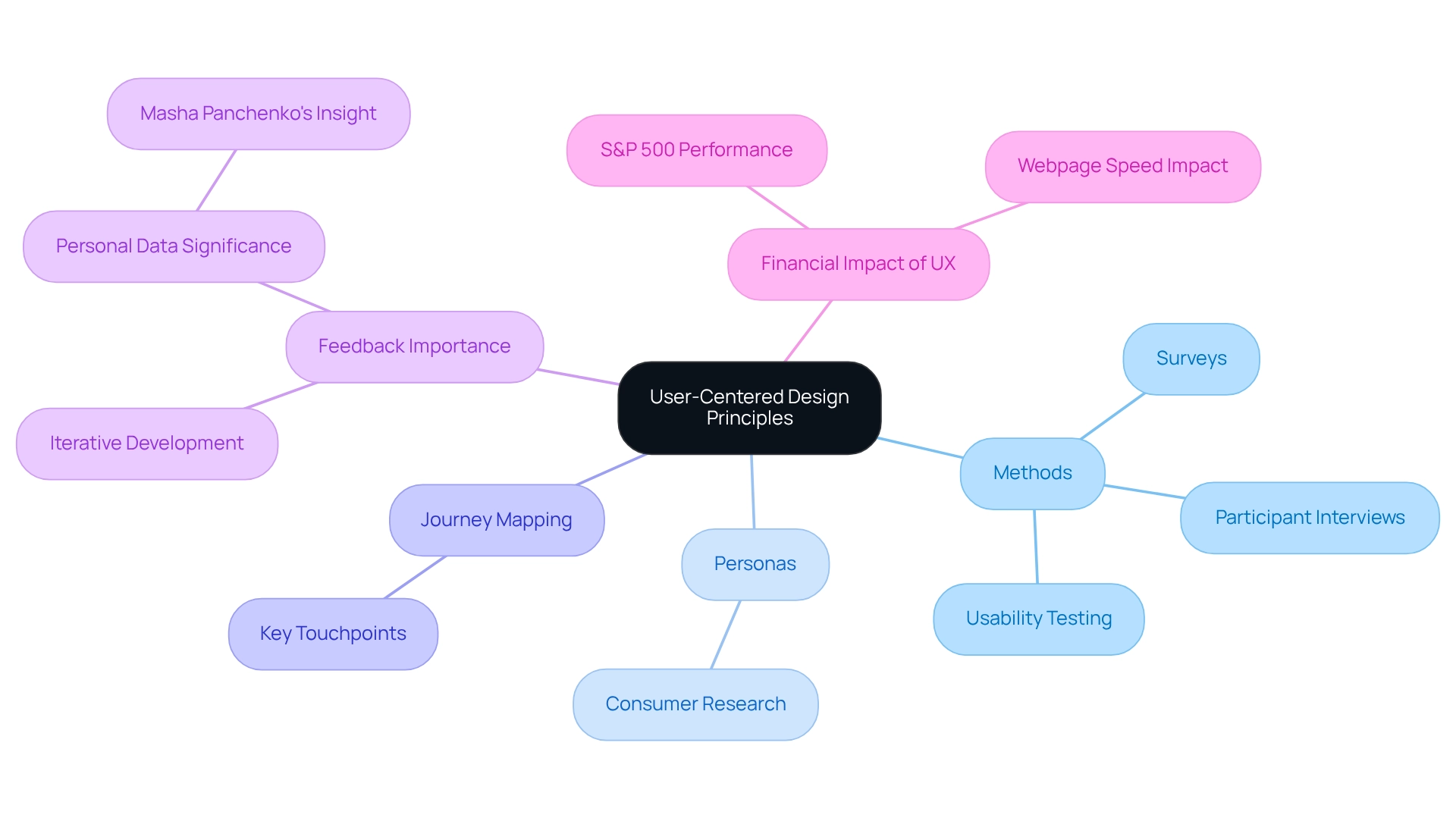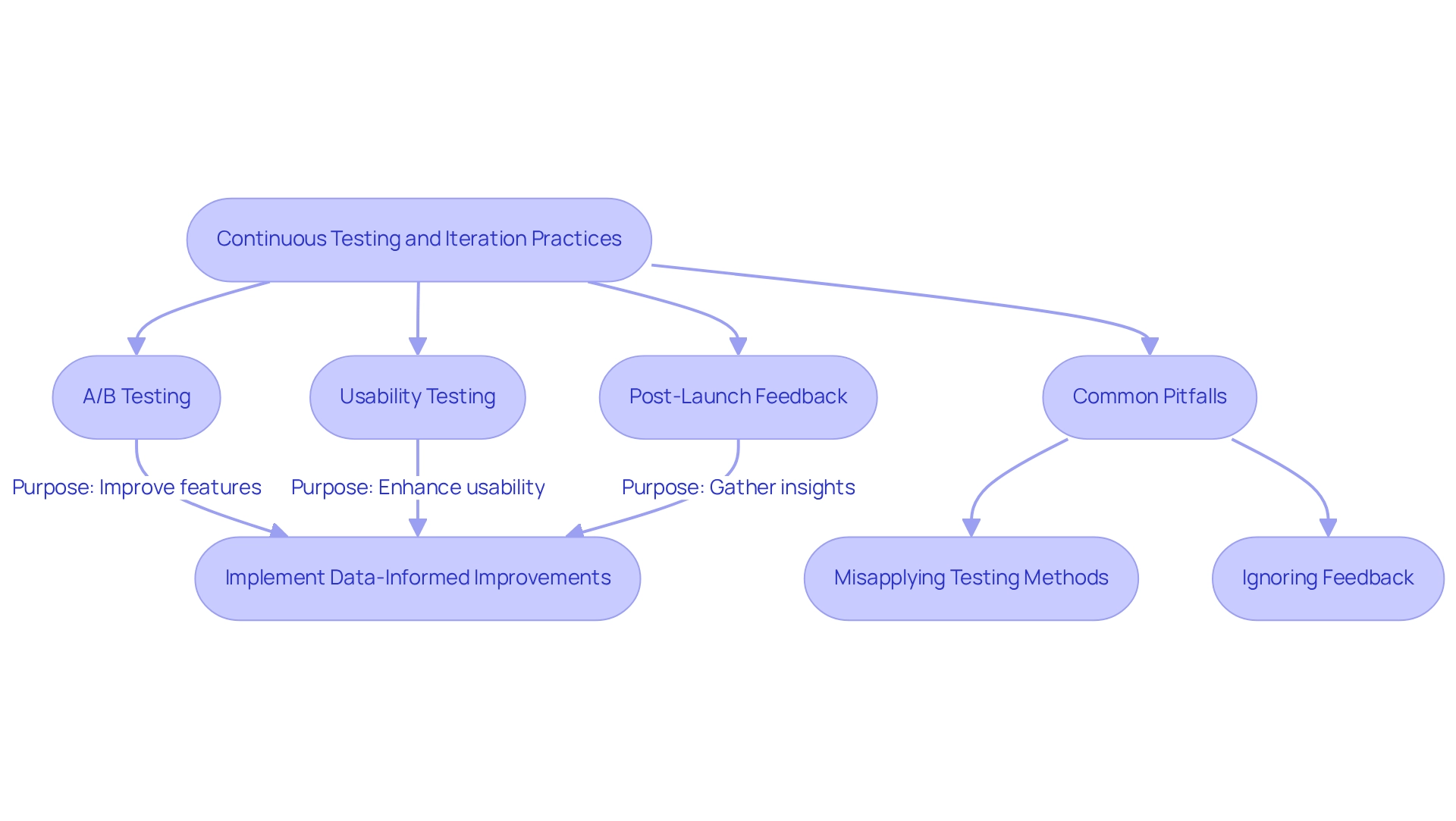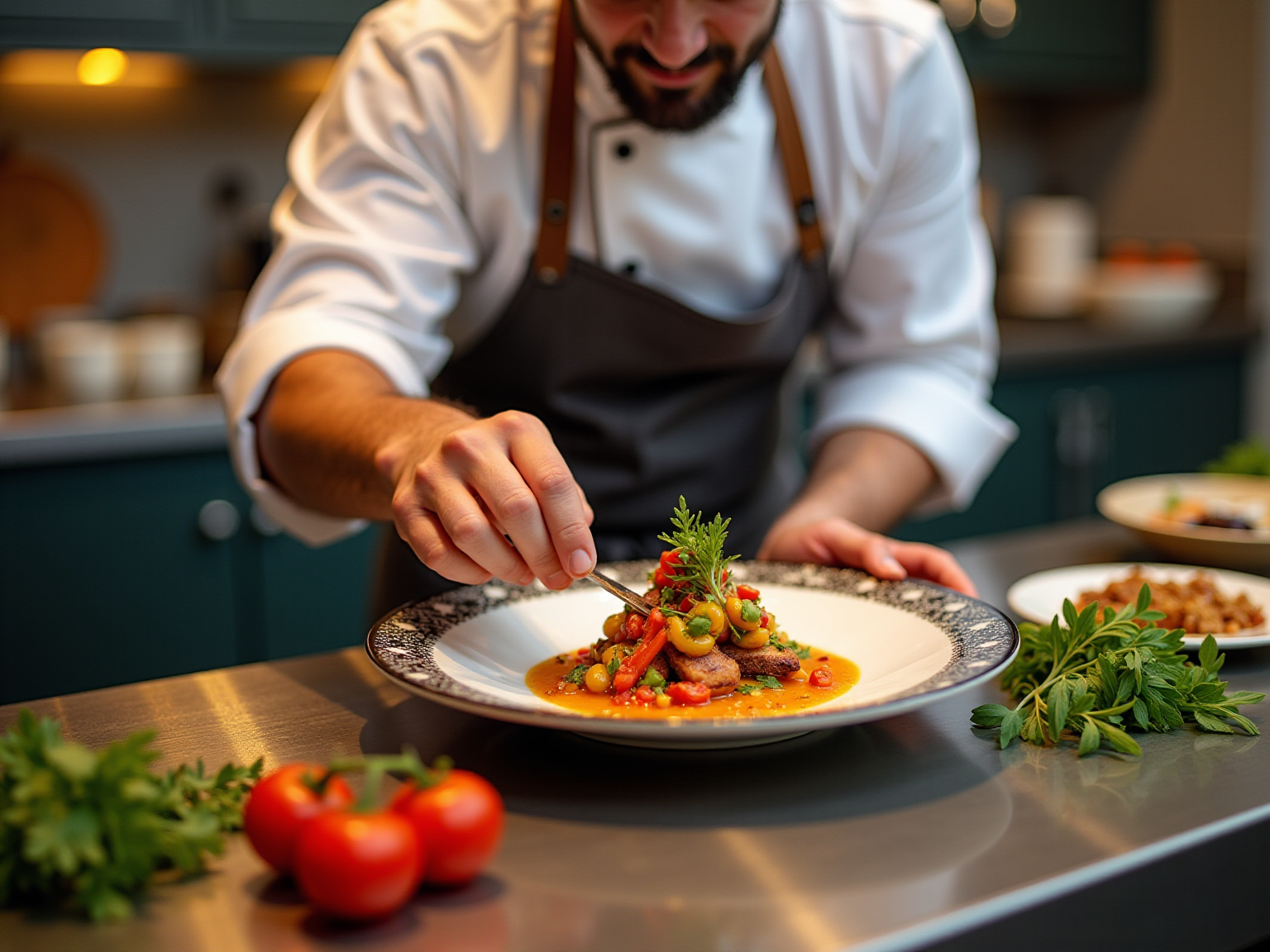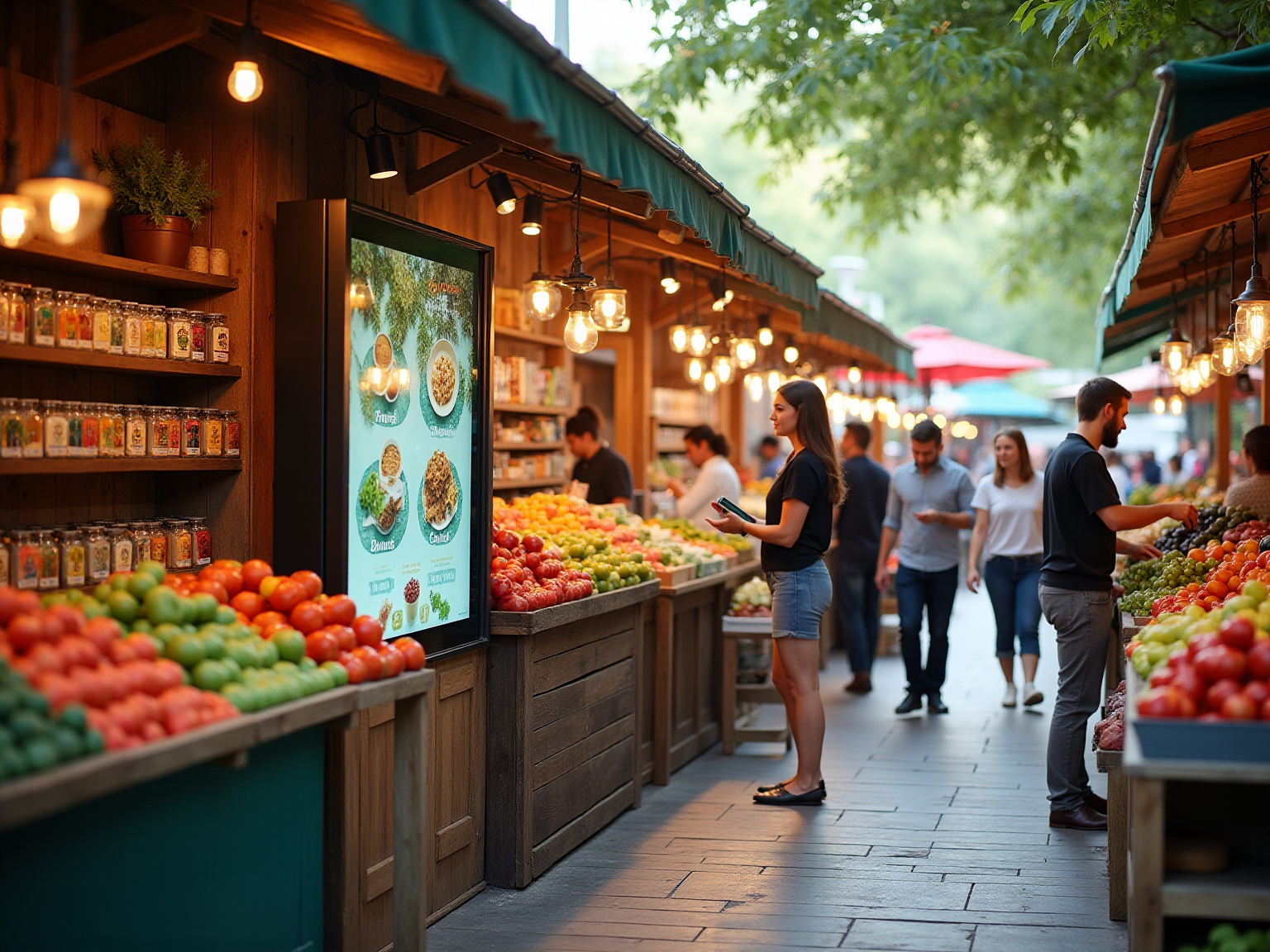Digital Branding Strategies
Best Practices for UX Strategy Development in UAE’s Food and Beverage Market
Overview
Best practices for developing a UX strategy in the UAE’s food and beverage market demand a profound understanding of consumer behavior, the strategic leverage of technology, and the implementation of user-centered design principles. These elements are essential for crafting personalized and engaging experiences that resonate with consumers.
Continuous testing and iteration are paramount, supported by robust consumer research and the latest technological advancements. This approach not only adapts to evolving preferences but also ensures compliance with local market dynamics, ultimately fostering loyalty and satisfaction among customers.
Introduction
In the dynamic and multifaceted landscape of the UAE, the food and beverage market is experiencing a profound transformation, driven by cultural richness and shifting consumer preferences. With sustainability, health-conscious choices, and local culinary integration emerging as pivotal themes, brands must adeptly navigate these evolving trends while adhering to ever-changing regulations.
By adopting user-centered design principles and harnessing advanced technology, companies can craft personalized experiences that resonate with their target audience. This article explores the essential strategies that brands need to implement in order to excel in this competitive arena, underscoring the significance of ongoing testing and iteration to enhance user satisfaction and foster loyalty.
Understand the UAE Food and Beverage Market Dynamics
The UAE food and beverage sector stands out due to its multicultural demographic, which weaves a rich tapestry of tastes and preferences. As we look ahead to 2025, key trends indicate a growing demand for sustainability, health-conscious options, and the integration of local culture into culinary offerings.
To effectively identify target demographics and understand their evolving preferences, brands should prioritize comprehensive research aligned with the best practices for UX strategy development in UAE’s food and beverage market. Insights drawn from consumer behavior studies can empower companies to adopt best practices for UX strategy development in UAE’s food and beverage market, creating personalized experiences that resonate with local consumers, thereby enhancing engagement and fostering loyalty.
Furthermore, staying informed about regulatory changes and food safety standards in the UAE is essential for compliance and for building consumer trust. The emergence of specialized cafes in smaller emirates like Fujairah and Ajman exemplifies this trend; these establishments not only satisfy the demand for artisanal coffee and unique treats but also contribute to the local community’s social fabric. This aligns with the broader trend of sustainability and community involvement, underscoring the importance of synchronizing business strategies with consumer expectations and industry dynamics, particularly through the best practices for UX strategy development in UAE’s food and beverage market.
Additionally, the UAE’s ‘Make it in the Emirates’ campaign underscores the increasing emphasis on promoting local products, illustrating a wider trend toward sustainability and community support. This initiative plays a pivotal role in shaping local consumer behavior and company strategies, encouraging businesses to prioritize local sourcing and production.
Moreover, the cost of a Big Mac in the UAE, priced at 4.9 USD as of 2024, serves as a concrete reference point for discussing consumer preferences and pricing. Understanding these industry dynamics is vital for companies striving to thrive in this competitive landscape. As highlighted by the IMARC Group, the market research report offers a comprehensive analysis of all major regional markets, including Dubai, Abu Dhabi, Sharjah, and others, further reinforcing the necessity for brands to adapt to the unique characteristics of each market.

Implement User-Centered Design Principles
Applying principles centered around individuals is essential for grasping the needs, objectives, and challenges faced by people during the development process. This can be effectively accomplished through various methods, including:
- Participant interviews
- Surveys
- Usability testing
For instance, food and beverage companies can create detailed personas based on consumer research, which serve as invaluable guides for development choices. Techniques such as journey mapping are also crucial in identifying key touchpoints where individuals engage with the brand, facilitating the enhancement of these experiences, in line with the best practices for UX strategy development in UAE’s food and beverage market.
Emphasizing feedback from participants is vital; iterative development processes that incorporate this input yield more engaging and effective digital experiences tailored to the distinct preferences of consumers in the UAE. As Masha Panchenko observes, ‘Observing the change in your personal data is more crucial than all the statistics from the reports available,’ underscoring the significance of individual personal data in shaping effective UX strategies.
Notably, companies that excel in user experience outperform the S&P 500 index by 35%, highlighting the financial advantages of investing in quality UX. Furthermore, research indicates that every 0.1-second improvement in webpage speed can significantly boost sales and conversion rates, making it imperative for brands to prioritize enhancing their digital interfaces by implementing best practices for UX strategy development in UAE’s food and beverage market. By avoiding common pitfalls, such as neglecting customer feedback or failing to revise designs, companies can refine their UX strategy and achieve superior results.

Leverage Technology for Enhanced User Experience
Leveraging technology is paramount for enhancing user experiences and streamlining operations within the food and beverage sector. The adoption of mobile applications for ordering and delivery significantly elevates convenience for consumers, enabling seamless interaction with companies. The global food delivery sector is projected to generate $183 billion in revenue by 2025, underscoring the vast opportunities available in this arena. Furthermore, data analytics is essential for deciphering consumer behavior, empowering companies to tailor their offerings and marketing strategies effectively. Emerging technologies, such as augmented reality (AR), provide immersive experiences that allow customers to visualize menu items prior to purchase, thereby enhancing their decision-making process. As Steve Bennett, a Business Formation Expert, articulates, “Businesses can leverage these insights to refine their delivery strategies, enhance their competitive edge, and adapt to the evolving demands of the industry.”
By embracing these technological advancements, food and beverage brands in the UAE can implement best practices for UX strategy development in UAE’s food and beverage market to not only differentiate themselves in a competitive landscape but also cultivate deeper connections with their customers, ultimately fostering loyalty and satisfaction. Additionally, the grocery delivery market is anticipated to expand at a compound annual growth rate (CAGR) of 16.11% from 2025 to 2025, further highlighting the critical need for technology adoption in this sector.

Adopt Continuous Testing and Iteration Practices
Implementing continuous testing and iteration practices is essential for adhering to the best practices for UX strategy development in UAE’s food and beverage market. This entails routinely assessing interactions and implementing data-informed improvements through techniques such as:
- A/B testing
- Usability testing
- Post-launch feedback collection
For instance, a food delivery app might refine its features based on customer insights, such as streamlining the checkout process or enhancing menu navigation. Notably, social and paid social channels convert at almost double the rate of other channels in the B2B space, underscoring the effectiveness of targeted marketing strategies in food delivery apps.
By consistently iterating on design and functionality, companies can implement the best practices for UX strategy development in UAE’s food and beverage market to respond to evolving consumer preferences and technological trends, ensuring their offerings remain competitive and user-centric. As Priyanka Sharma, Senior Systems Software Engineer at NVIDIA, states, “Manual testing is the only way to verify that the business requirements are successfully met and the customer gets the desired experience.” This highlights the critical role of manual testing in the UX strategy.
Furthermore, leading companies like Google and Amazon conduct extensive A/B testing, with each performing over 10,000 controlled experiments annually. This high-volume experimentation exemplifies the importance of data-driven decision-making in maintaining a competitive advantage.
However, brands should be aware of common pitfalls in continuous testing, such as misapplying testing methods or ignoring feedback from participants. By avoiding these challenges and adopting a proactive approach, businesses can boost user satisfaction, foster long-term loyalty and engagement, and ultimately drive business success.

Conclusion
The UAE food and beverage market is experiencing a profound transformation, driven by a diverse demographic and shifting consumer preferences. The escalating demand for sustainability, health-conscious options, and local culinary integration are pivotal trends that brands must adeptly navigate. Conducting comprehensive market research is imperative for identifying target demographics and understanding their distinct needs, which fosters brand loyalty and community engagement.
Implementing user-centered design principles empowers brands to craft personalized experiences that resonate deeply with consumers. By prioritizing user feedback and employing iterative design processes, companies can refine their offerings to align with the dynamic expectations of their audience. This approach not only enhances user satisfaction but also provides a competitive edge in a rapidly evolving marketplace.
Leveraging technology significantly enhances user experiences and operational efficiency. The proliferation of mobile ordering and delivery solutions, combined with data analytics and immersive technologies, enables brands to connect with customers in meaningful ways. By embracing these advancements, food and beverage businesses can distinguish themselves and cultivate enduring relationships with their clientele.
The importance of continuous testing and iteration cannot be overstated. Regularly evaluating user interactions and making data-driven adjustments ensures that brands remain responsive to evolving consumer preferences. By fostering a culture of experimentation and learning, companies can optimize their offerings and drive sustainable growth in the competitive UAE landscape.
In conclusion, by aligning strategies with market dynamics, prioritizing user-centered design, leveraging technology, and committing to continuous improvement, brands can thrive in the UAE’s vibrant food and beverage sector. The pathway to success lies in adapting to consumer needs and cultivating loyalty through exceptional experiences.
Frequently Asked Questions
What are the key trends in the UAE food and beverage sector looking ahead to 2025?
Key trends include a growing demand for sustainability, health-conscious options, and the integration of local culture into culinary offerings.
How can brands effectively identify target demographics in the UAE food and beverage market?
Brands should prioritize comprehensive research aligned with best practices for UX strategy development to understand evolving preferences and create personalized experiences.
Why is staying informed about regulatory changes and food safety standards important for companies in the UAE?
Staying informed is essential for compliance, building consumer trust, and ensuring that businesses meet industry standards.
What is the significance of specialized cafes in smaller emirates like Fujairah and Ajman?
Specialized cafes satisfy the demand for artisanal coffee and unique treats while contributing to the local community’s social fabric, aligning with trends of sustainability and community involvement.
What does the ‘Make it in the Emirates’ campaign emphasize?
The campaign promotes local products and encourages businesses to prioritize local sourcing and production, reflecting a wider trend towards sustainability and community support.
How does the price of a Big Mac in the UAE relate to consumer preferences?
The cost of a Big Mac, priced at 4.9 USD as of 2024, serves as a reference point for discussing consumer preferences and pricing in the market.
Why is it important for companies to understand industry dynamics in the UAE food and beverage market?
Understanding industry dynamics is vital for companies to thrive in a competitive landscape and to adapt to the unique characteristics of each market, as highlighted by comprehensive market analysis reports.



